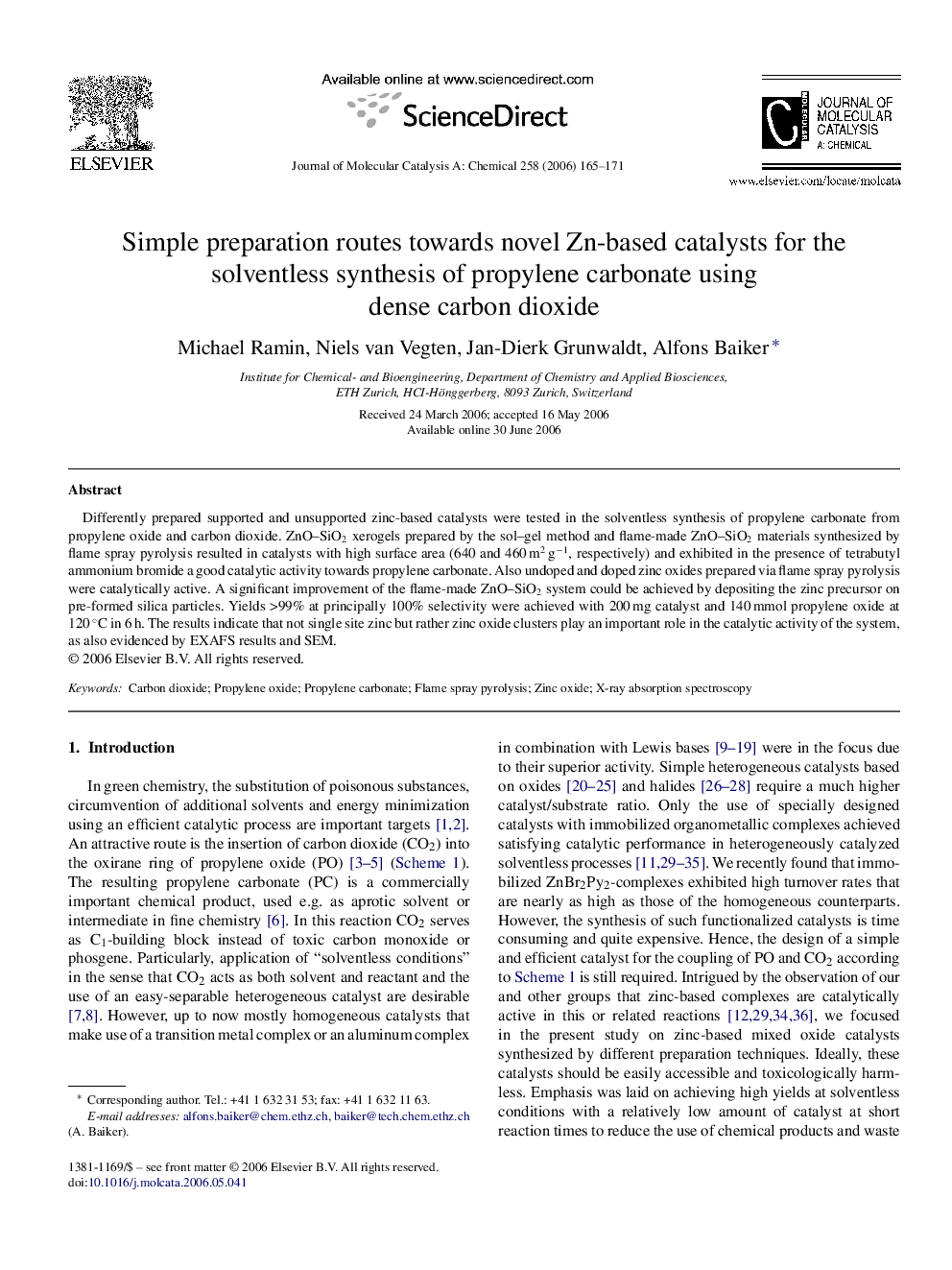| Article ID | Journal | Published Year | Pages | File Type |
|---|---|---|---|---|
| 68879 | Journal of Molecular Catalysis A: Chemical | 2006 | 7 Pages |
Differently prepared supported and unsupported zinc-based catalysts were tested in the solventless synthesis of propylene carbonate from propylene oxide and carbon dioxide. ZnO–SiO2 xerogels prepared by the sol–gel method and flame-made ZnO–SiO2 materials synthesized by flame spray pyrolysis resulted in catalysts with high surface area (640 and 460 m2 g−1, respectively) and exhibited in the presence of tetrabutyl ammonium bromide a good catalytic activity towards propylene carbonate. Also undoped and doped zinc oxides prepared via flame spray pyrolysis were catalytically active. A significant improvement of the flame-made ZnO–SiO2 system could be achieved by depositing the zinc precursor on pre-formed silica particles. Yields >99% at principally 100% selectivity were achieved with 200 mg catalyst and 140 mmol propylene oxide at 120 °C in 6 h. The results indicate that not single site zinc but rather zinc oxide clusters play an important role in the catalytic activity of the system, as also evidenced by EXAFS results and SEM.
Graphical abstractDifferently prepared supported and unsupported zinc-based catalysts were tested in the solventless synthesis of propylene carbonate. ZnO–SiO2 xerogels prepared by the sol–gel method and flame-made ZnO–SiO2 materials synthesized by flame spray pyrolysis exhibited a good catalytic activity. A significant improvement of the flame-made ZnO–SiO2 catalysts could be achieved by depositing the zinc precursor on pre-formed silica particles. Not single site zinc but rather zinc-clusters play an important role in the catalytic activity of the system, as also evidenced by EXAFS results and SEM.Figure optionsDownload full-size imageDownload as PowerPoint slide
